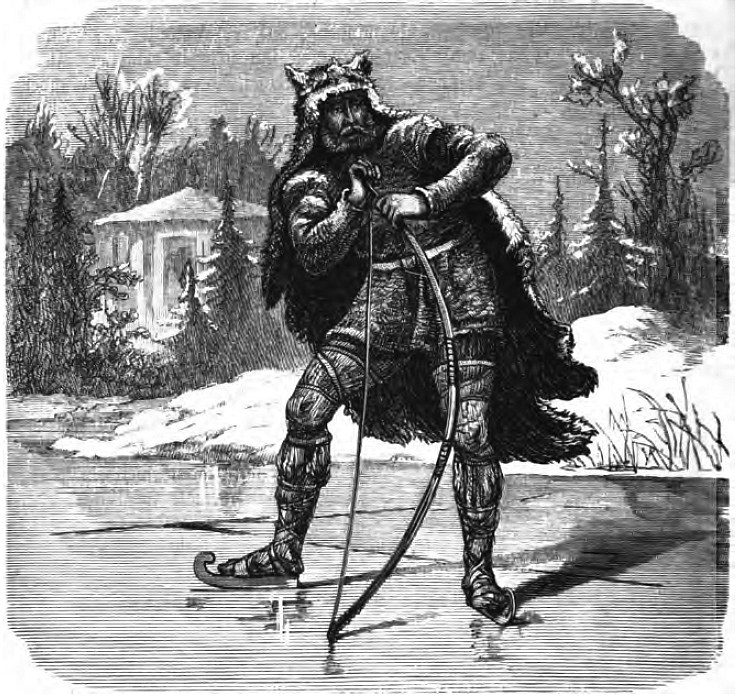Ýdalir on:
[Wikipedia]
[Google]
[Amazon]
 In Norse mythology, Ýdalir (" yew- dales"Orchard (1997:185).) is a location containing a dwelling owned by the god
In Norse mythology, Ýdalir (" yew- dales"Orchard (1997:185).) is a location containing a dwelling owned by the god
The Lost Beliefs of Northern Europe
' (illustrated edition). Routledge. * Thorpe, Benjamin (Trans.) (1907). ''The Elder Edda of Saemund Sigfusson''.
 In Norse mythology, Ýdalir (" yew- dales"Orchard (1997:185).) is a location containing a dwelling owned by the god
In Norse mythology, Ýdalir (" yew- dales"Orchard (1997:185).) is a location containing a dwelling owned by the god Ullr
In Norse mythology, Ullr (Old Norse: ) is a god associated with archery. Although literary attestations of Ullr are sparse, evidence including relatively ancient place-name evidence from Scandinavia suggests that he was a major god in earlier ...
. Ýdalir is solely attested in the ''Poetic Edda
The ''Poetic Edda'' is the modern name for an untitled collection of Old Norse anonymous narrative poems, which is distinct from the ''Prose Edda'' written by Snorri Sturluson. Several versions exist, all primarily of text from the Icelandic med ...
'', compiled in the 13th century from earlier traditional sources. Scholarly theories have been proposed about the implications of the location.
Attestations
Ýdalir is solely attested in stanza 5 of the poem ''Grímnismál
''Grímnismál'' (Old Norse: ; 'The Lay of Grímnir') is one of the mythological poems of the ''Poetic Edda''. It is preserved in the Codex Regius manuscript and the AM 748 I 4to fragment. It is spoken through the voice of ''Grímnir'', one of ...
'' (collected in the ''Poetic Edda''), where Odin (disguised as '' Grímnir'') tells the young Agnar that Ullr owns a dwelling in Ýdalir. The stanza reads (''Ýdalir'' is here translated as ''Ydalir''):
:Ydalir it is called, where Ullr :has himself a dwelling made. : Alfheim the godsFrey Freyr (Old Norse: 'Lord'), sometimes anglicized as Frey, is a widely attested god in Norse mythology, associated with kingship, fertility, peace, and weather. Freyr, sometimes referred to as Yngvi-Freyr, was especially associated with Sweden a ...gave :in days of yore for a tooth-gift.Thorpe (1907:21).
Theories
Discussing Ýdalir, Henry Adams Bellows comments that "the wood of the yew-tree was used for bows in the North just as it was long afterwards for England."Bellows (2004:88).Rudolf Simek
Rudolf Simek (born 21 February 1954) is an Austrian philologist and religious studies scholar who is Professor and Chair of Ancient German and Nordic Studies at the University of Bonn. Simek specializes in Germanic studies, and is the author o ...
says that "this connexion of the god with the yew-tree, of whose wood bows were made (cf. ON ''ýbogi'' 'yew bow'), has led to Ullr being seen as a bow-god."Simek (2007:375). Andy Orchard comments that Ýdalir is an "aptly named dwelling-place or the
Or or OR may refer to:
Arts and entertainment Film and television
* "O.R.", a 1974 episode of M*A*S*H
* Or (My Treasure), a 2004 movie from Israel (''Or'' means "light" in Hebrew)
Music
* ''Or'' (album), a 2002 album by Golden Boy with Mis ...
archer
Archery is the sport, practice, or skill of using a bow to shoot arrows.Paterson ''Encyclopaedia of Archery'' p. 17 The word comes from the Latin ''arcus'', meaning bow. Historically, archery has been used for hunting and combat. In m ...
-god, Ull." According to Hilda Ellis Davidson
Hilda Roderick Ellis Davidson (born Hilda Roderick Ellis; 1 October 1914 – 12 January 2006) was an English folklorist. She was a scholar at the University of Cambridge and The Folklore Society, and specialized in the study of Celtic and G ...
, while Valhalla "is well known because it plays so large a part in images of warfare and death," the significance of other halls in Norse mythology such as Ýdalir, and the goddess Freyja
In Norse paganism, Freyja (Old Norse "(the) Lady") is a goddess associated with love, beauty, fertility, sex, war, gold, and seiðr (magic for seeing and influencing the future). Freyja is the owner of the necklace Brísingamen, rides a chario ...
's afterlife location Fólkvangr
In Norse mythology, Fólkvangr (Old Norse: , "field of the host"Orchard (1997:45). or "people-field" or "army-field"Lindow (2001:118).) is a meadow or field ruled over by the goddess Freyja where half of those that die in combat go upon death, w ...
has been lost.Davidson (1993:67).
Udale, located in Cromarty
Cromarty (; gd, Cromba, ) is a town, civil parish and former royal burgh in Ross and Cromarty, in the Highland area of Scotland. Situated at the tip of the Black Isle on the southern shore of the mouth of Cromarty Firth, it is seaward from ...
, Scotland
Scotland (, ) is a Countries of the United Kingdom, country that is part of the United Kingdom. Covering the northern third of the island of Great Britain, mainland Scotland has a Anglo-Scottish border, border with England to the southeast ...
, is first recorded in 1578, and is thought to derive from Old Norse ''y-dalr''. Robert Bevan-Jones proposes a connection between veneration of Ullr and Ýdalir among the settling pagan Norse in Scotland and their bestowment of the name ''ydalr'' to the location.Bevan-Jones (2002:134).
Notes
References
* Bellows, Henry Adams (Trans.) (2004). ''The Poetic Edda: The Mythological Poems''. Courier Dover Publicans. * Bevan-Jones, Robert (2002). ''The Ancient Yew: A History of Taxus baccata''. Windgather Press. * Davidson, Hilda Roderick Ellis (1993).The Lost Beliefs of Northern Europe
' (illustrated edition). Routledge. * Thorpe, Benjamin (Trans.) (1907). ''The Elder Edda of Saemund Sigfusson''.
Norrœna Society
The Norrœna Society was an organization dedicated to Northern European culture, that published sets of reprints of classic 19th-century editions, mostly translations, of Old Norse literary and historical works, Northern European folklore, and medi ...
.
* Orchard, Andy (1997). ''Dictionary of Norse Myth and Legend''. Cassell.
* Simek, Rudolf (2007) translated by Angela Hall. ''Dictionary of Northern Mythology''. D.S. Brewer.
{{DEFAULTSORT:Ydalir
Locations in Norse mythology